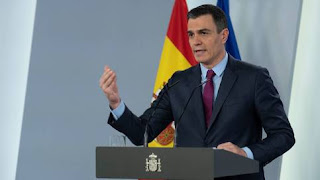EPISODE 8: LA DESESCALADA

Today we are going to talk about La Desescalada – literally, the De-escalation. Today, April 30 th , this is what everyone in Spain is talking about; the lifting of the lockdown. La desescalada means the process by which life will slowly return to what Pedro Sanchez, the Spanish Prime Minister calls, “la nueva normalidad” – the new normal. Today, we have the pleasure of listening to a native Spanish speaker reading our news story, so thanks to Nuria for reading about La Desescalada. Let’s look at the story in two parts. Here is some vocabulary you will meet in part one. Una fase – a phase Afrontar – to face up to, confront Una etapa – a stage Enfatizar – to emphasize La clave – the key El siguiente – the next one Monotorizar – to monitor La población de riesgo – the vulnerable population We will listen to the introduction to the news story about La Desescalada, and also the first point in a four point plan to reopen Spain. The second, third and f




